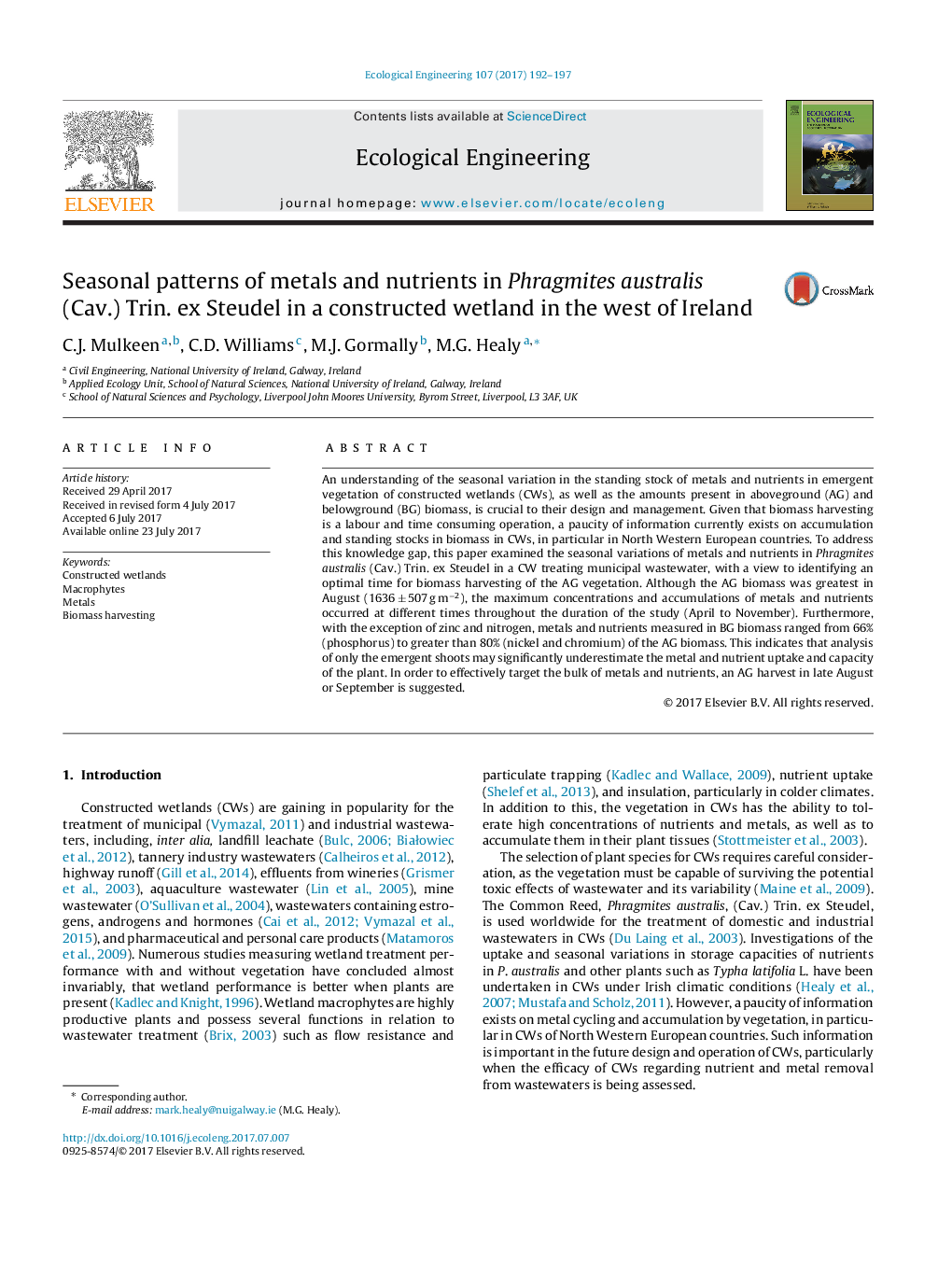| Article ID | Journal | Published Year | Pages | File Type |
|---|---|---|---|---|
| 5743674 | Ecological Engineering | 2017 | 6 Pages |
â¢Seasonal patterns of metals and nutrients in a constructed wetland were investigated.â¢Maximum concentrations and accumulations of both did not occur during the same months.â¢The aboveground biomass was highest in August.â¢Concentrations of P, Cr, Cu and Ni were consistently lower in belowground biomass.â¢A harvest of aboveground vegetation in Autumn is recommended.
An understanding of the seasonal variation in the standing stock of metals and nutrients in emergent vegetation of constructed wetlands (CWs), as well as the amounts present in aboveground (AG) and belowground (BG) biomass, is crucial to their design and management. Given that biomass harvesting is a labour and time consuming operation, a paucity of information currently exists on accumulation and standing stocks in biomass in CWs, in particular in North Western European countries. To address this knowledge gap, this paper examined the seasonal variations of metals and nutrients in Phragmites australis (Cav.) Trin. ex Steudel in a CW treating municipal wastewater, with a view to identifying an optimal time for biomass harvesting of the AG vegetation. Although the AG biomass was greatest in August (1636 ± 507 g mâ2), the maximum concentrations and accumulations of metals and nutrients occurred at different times throughout the duration of the study (April to November). Furthermore, with the exception of zinc and nitrogen, metals and nutrients measured in BG biomass ranged from 66% (phosphorus) to greater than 80% (nickel and chromium) of the AG biomass. This indicates that analysis of only the emergent shoots may significantly underestimate the metal and nutrient uptake and capacity of the plant. In order to effectively target the bulk of metals and nutrients, an AG harvest in late August or September is suggested.
